Designing for Diversity: Building Community at Stamps
The University of Michigan held an open Diversity Summit for the campus community on November 10, 2015.
The summit was a town hall style event for the community, and U-M students, staff, faculty, By Any Means Necessary (BAMN) protesters, Washtenaw County officials, and many others participated. The event was emceed by Pulitzer-Prize winning Chicago Tribune columnist Clarence Page. Asked by The Michigan Daily about the goals of the summit, Page responded: “I hope to get people over their initial shyness about talking about race in mixed company.” Adding, “The funny thing about race, gender, and ethnicity issues, people are very reluctant to discuss them in mixed company.”
The summit also took place the week after Yale University was in the news not only for the ugly incidents that took place on its campus but the university's response to them. At University of Missouri, a slew of racially charged “episodes” (New York Times) have continued to generate protest. At Harvard, portraits of African American law faculty were defaced and a hate crime investigation is in progress.
This is the broader climate within which the University of Michigan is situated, and within which it embarks on a five-year strategic planning process focusing on diversity, inclusion, and equity. The summit was part of the initial “listening” phase of this planning process. According to documents released by the University, the plan will “further promote the University's mission and values regarding diversity, equity, and inclusion.” As part of the plan, units of the university participate in their own planning with respect to key constituents like students, staff, faculty, alumni, and patients.
That is, this planning is comprehensive and ambitious in scope.
How does one unit of the University of Michigan, situated within this larger climate, proceed in the direction of diversity, equality, and inclusivity?
For Brian Banks at the Penny W. Stamps School of Art & Design at the University of Michigan, it begins with students. A student advisor, Banks has worked at Stamps for sixteen years. “I can tell you from surveys, our students feel more welcome here than they do at any place else at the University.” Banks is the staff advisor to Stamps in Color, a student group in its second semester of existence. The group's mission is to increase the creative, social, and professional opportunities for creatives of color at Stamps and promote an atmosphere conducive to their growth.
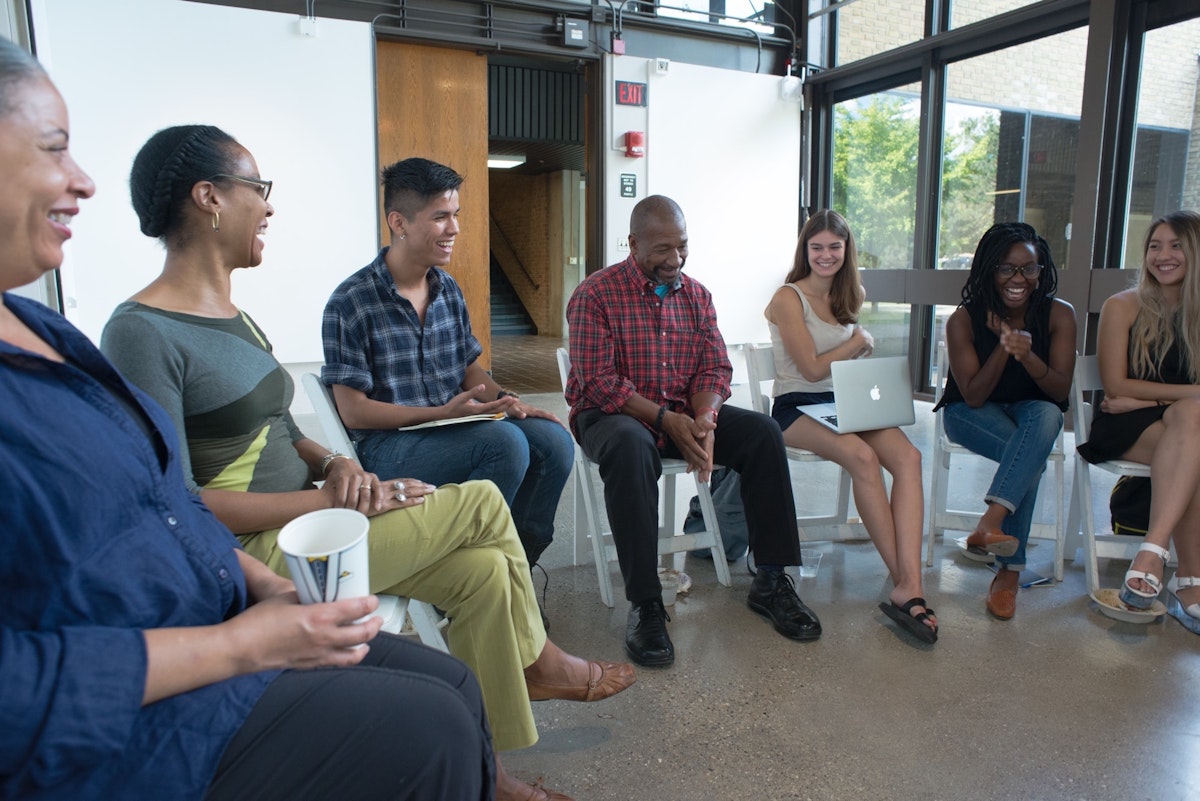
“I think the biggest challenge is having students of color feel that they belong here,” Banks says. “We're a small staff, so we get to know the students pretty well, and they get to know us pretty well.” The school offers frequent one-to-one connections between students and advisors, and the hope is that Stamps in Color, which aims to facilitate events like artist lectures, dialogue sessions, and exhibits, offers another avenue for connection, conversation, and action around diversity.
Amy Kamdem-Wandji, a senior at the University of Michigan pursuing a dual degree in Art & Design (Stamps) and International Relations (LSA), is the primary student contact for Stamps in Color. “To my knowledge,” she says, “the School has never had a real [MLK Day] event.” She's describing the student-led Agents of Change exhibit, the first official standalone Stamps event that's part of the Martin Luther King Jr. activities at the University. Historically, Stamps has not participated in a focused, in-depth way in University MLK Day activities. The exhibit opens January 8, 2016 at 5 pm at the Duderstadt Center and explores diversity on North Campus through the topics of climate, faculty instruction, and engagement.
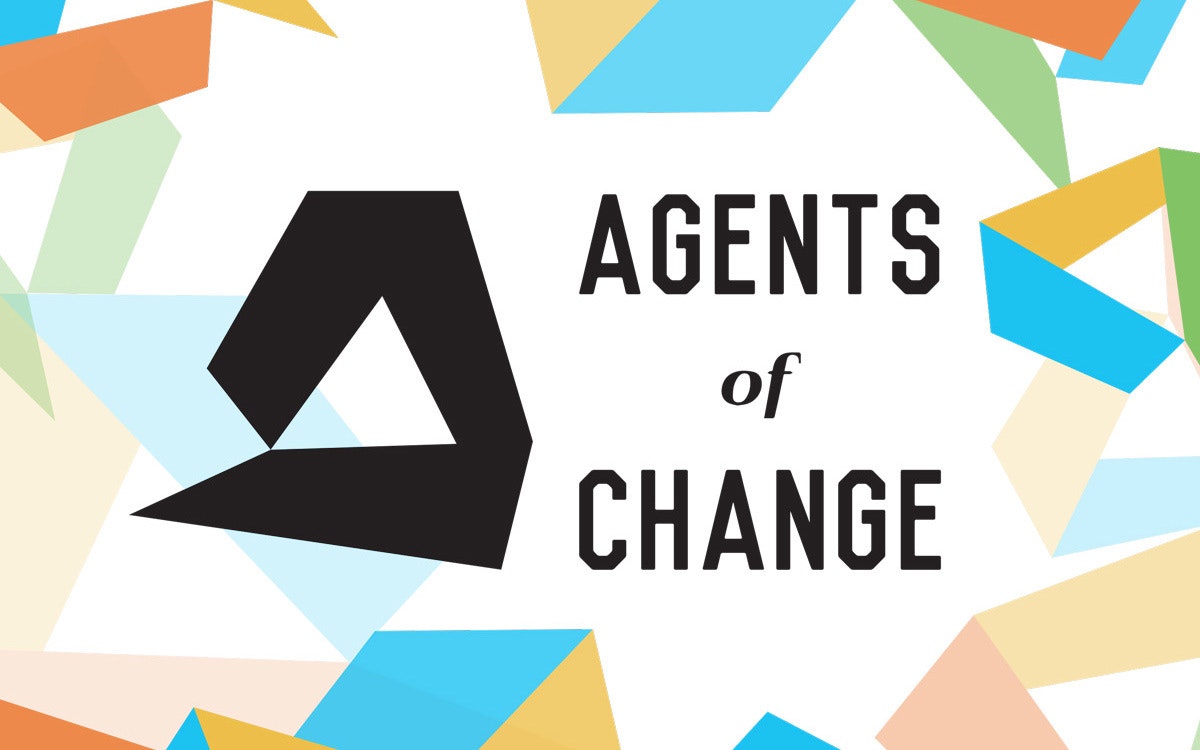
Asked about the biggest challenge with respect to diversity for students, Kamdem-Wandji cites climate first. She speaks passionately about the stories behind the numbers. There are 561 undergraduate students at Stamps, and students can choose to identify their ethnicity on their applications for admission. “We now have 56 students who have identified as African-American, Latino, or Native American. How have these students really been reflected in the climate? And I mean the climate for everyone. Is everyone now having more conversations about identity, and how that identity affects the work that happens here?” Getting at these and other types of diversity stories is the first goal of the exhibit, and the second goal is identifying the gaps. “It's a critical look at what's going on, but also a look at what the role of diversity really is.”
“We pride ourselves on preparing our students to engage with the world, with the community locally and then with the world. And we cannot do that well if we ourselves are not diverse.” Karina Galvan Moore is Director of Admissions at Stamps. A social worker by training, she came to the University in 2002 as the Latino/a recruiter, prior to the 2006 ban on affirmative action, when specific people were charged with the recruitment of underrepresented populations. In that role, she also handled art and design applications. Her approach to the recruitment of art and design students now is rooted in this experience. “My passion is to help students who are thinking that Michigan is out of their reach. This is true for a lot of underrepresented populations: kids from urban or rural areas; kids who are the first in their family to go to college; art kids who have been focusing on art or design and not on academics in the same way that kids applying to engineering may have. In that sense, I feel like I still use the tools that I used in working with Latino students to recruit art and design students.”
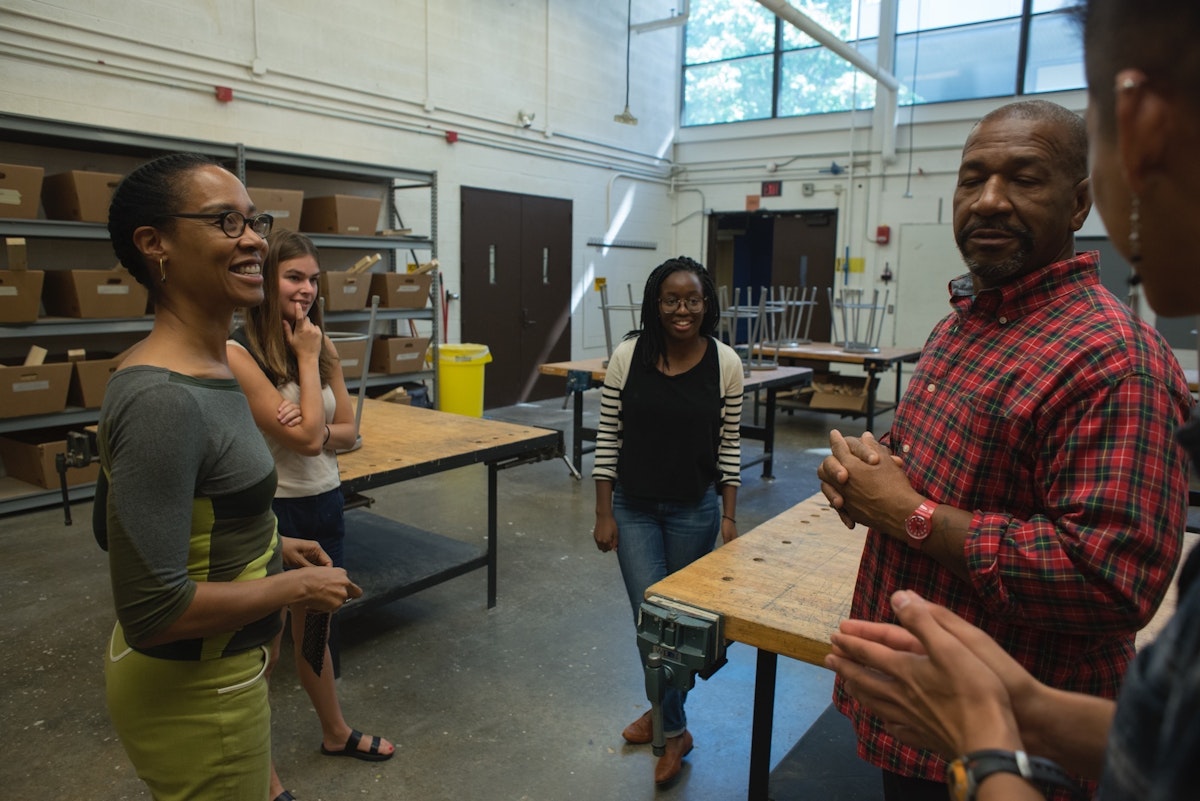
Moore agrees that climate is important. She echoes advisor Brian Banks; tight-knit community serves all students, but especially those who are underrepresented or high risk. “We try to be as personable as possible with all prospective students. But that turns out to be especially helpful for underrepresented students,” she explains. To address diversity, the Stamps admissions office has also increased its presence in places around the country that have increasing high school populations, bigger pools of prospective students. In many states, growing high school populations tend to be related to higher ethnic diversity, socioeconomic diversity, and more. Leveraging connections with alumni also helps. For example, alums may help to begin a conversation about in-school visits from admissions at the superintendent level as opposed to the teacher level, which could be especially useful when trying to reach students in under-resourced schools with over-taxed teachers.
To encourage cross-cultural understanding, all undergraduate students are also required to travel internationally and to participate in an engagement studio locally. Stamps is the only U-M unit to require international experiences, and for Moore, this requirement is about increasing diversity within the school as much as it is about exposing students to diversity in the world: “If we're only experiencing diversity when we're going out to these communities then our students are at a disadvantage. They might have this one-off encounter for one semester or for three weeks while they're abroad and then never have to deal with diversity again if we don't have diversity in the classroom.” To frame these engagement experiences well, Moore advocates for going deeper. She notes that, in general, the Stamps faculty frame engagement experiences successfully:
“This is a partnership. We're not going there to give this community something. We're there to learn from the community and exchange ideas with them.”
This framing is important, but so is extensive student training, Kamdem-Wandji notes. The gap between a person's unique cultural identity and the broad-based cross-cultural training that students receive can feel very wide, leaving some at the university craving much deeper conversations. “Personally, for me it becomes more of an issue with engagement courses in Africa.” Kamden is a first-generation college student, and her family's roots are in Cameroon, where much of her extended family continues to live. “Unless you're really addressing people's different backgrounds instead of just kind of mentioning them, it can be a sticky situation.” Moore agrees; she attended the U-M Diversity Summit and recalls one student's open mic suggestion related to LSA's Race and Ethnicity requirement. All undergraduate students must take at least one course that “address issues that arise from racial or ethnic intolerance,” the LSA catalogue explains. “Make it more real,” Moore says of the requirement, “Prepare students.”
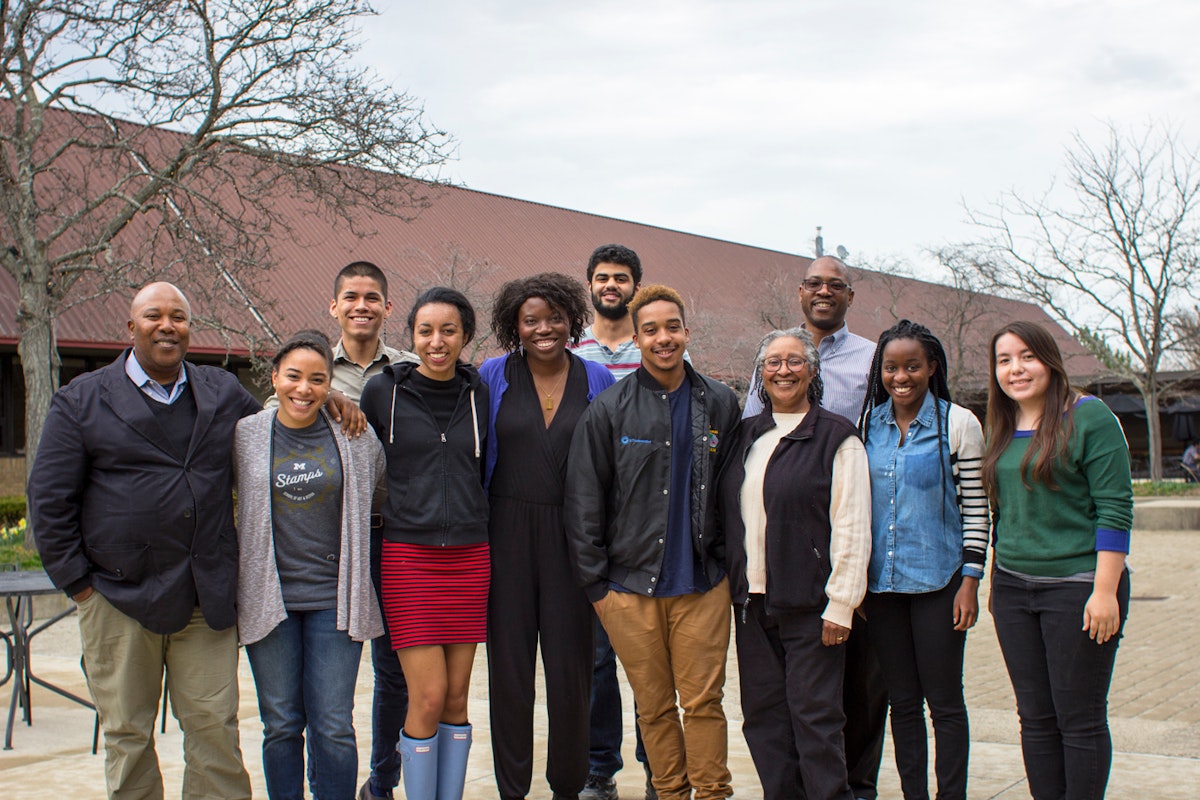
“He's everybody's mentor,” Amy Kamdem-Wandji says, praising Stamps professor Franc Nunoo-Quarcoo. He awaits his interview under the large world map on the second floor of the Stamps building on North campus. He chooses a quiet spot on the first floor for the conversation, and while the spot is not highly trafficked, about a half-dozen people stop to chat. There is this student or that student, there is another faculty member, with whom there is planning for a future exhibit, and there is advisor Brian Banks.
Nunoo-Quarcoo is a designer, but his true interest is narrative. “Whatever you design it's about communicating to the public. To me it's about a range of public. It's not one public, wealthy, well-educated. It's really just about everyone. People who are literate, people who are illiterate,” he says, by way of introduction. He has been teaching at Stamps since 2009, having graduated from the School in 1987. He heads the Stamps Diversity Core Planning Team that's responsible for stewarding the school's diversity strategic plan which will then feed into the university's plans. Currently the team is collecting and analyzing data on diversity practices at Stamps; that data will inform the next phase, which entails setting short, medium, and long-term goals for the unit.
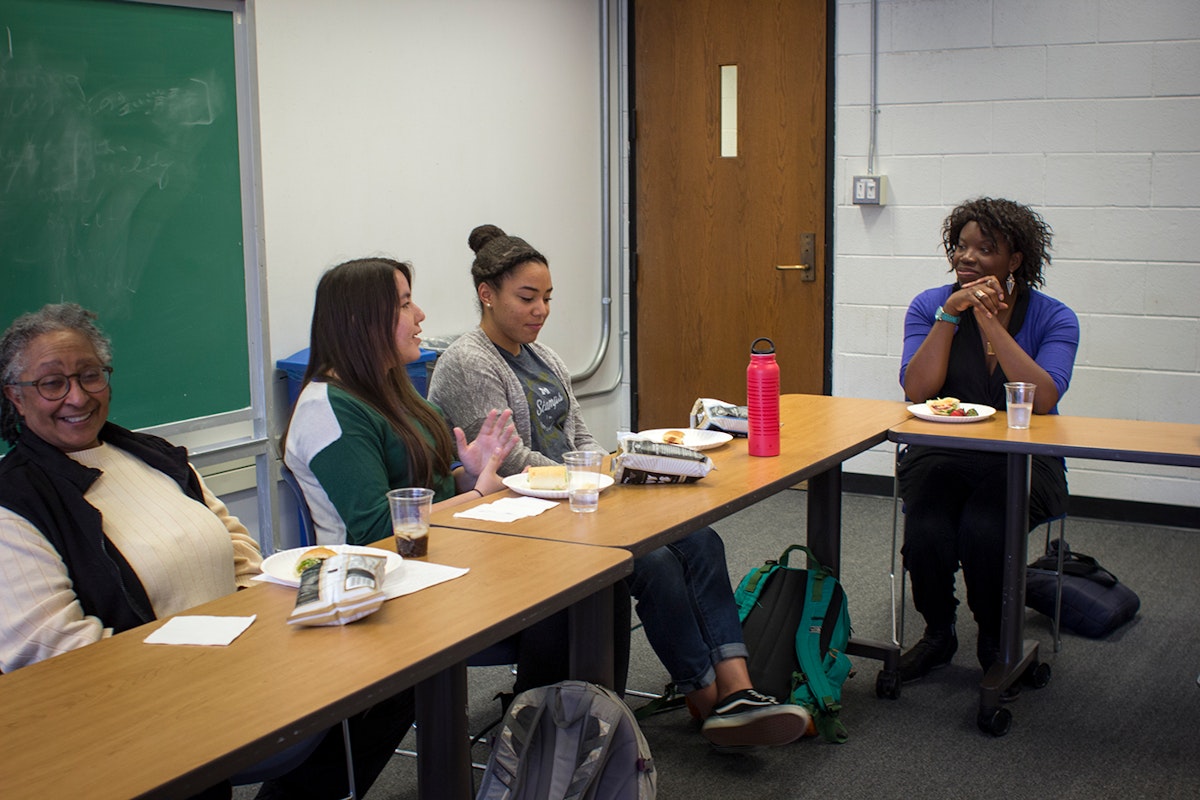
“I do a lot of independent studies with students,” Nunoo-Quarcoo notes. He is also providing mentorship for the upcoming Agents of Change exhibit. He continues: “It is amazing what the students are thinking about. This to me is diversity, the actual diverse ideas. Diversity is not just about gender or race, it is really about how we deliver knowledge and influence the knowledge so that people can actually live a better life.” He notes that he is discussing climate.
“What happens when you bring students here who may not have the history of being in environments like this?” he asks. “How do they survive, do they have places to go?”
Nunoo-Quarcoo's passion with respect to diversity centers on making sure young women can succeed, and the interview conversation is a patchwork of stories about his work with students, including Amy Kamdem-Wandji, his courses, including collaborative curriculum in Detroit, and design. “We talk about how design is supposed to be equitable, but then we talk about things like housing. Why do we use cheap noxious materials in housing for poor people and then wonder why they're always sick or they have asthma? Or, you know, simple things like a bus shelter. If you live in Michigan, why should you have the same design as for Los Angeles?”
Though diversity can be quantified and measured along set metrics, much of it, one gathers from the many conversations about diversity at Stamps, remains about the unquantifiable. Diversity has to do with creating a suitable climate within the unit so that its unique constituencies can flourish, and climate is related to open, honest, and frank conversation. Said Clarence Page ahead of the diversity summit about such conversation: “Folks are shy about it, not so much about not having views, but being afraid of offending somebody. I think that is one of the big muzzles on a lot of people's sense of being free to speak openly on what's on their minds.”

The university community will have the opportunity to have this conversation anew at the Agents of Change exhibit, says Amy Kamdem-Wandji.
“We want to talk to our community. Maybe later, we'll get to the answering questions portion. Right now, we're exposing.”
Story by Anna Prushinskaya. Photos by Nicholas Williams and Carl Greene.
Learn more about Stamps in Color in an article by Amy Kamdem-Wandji.